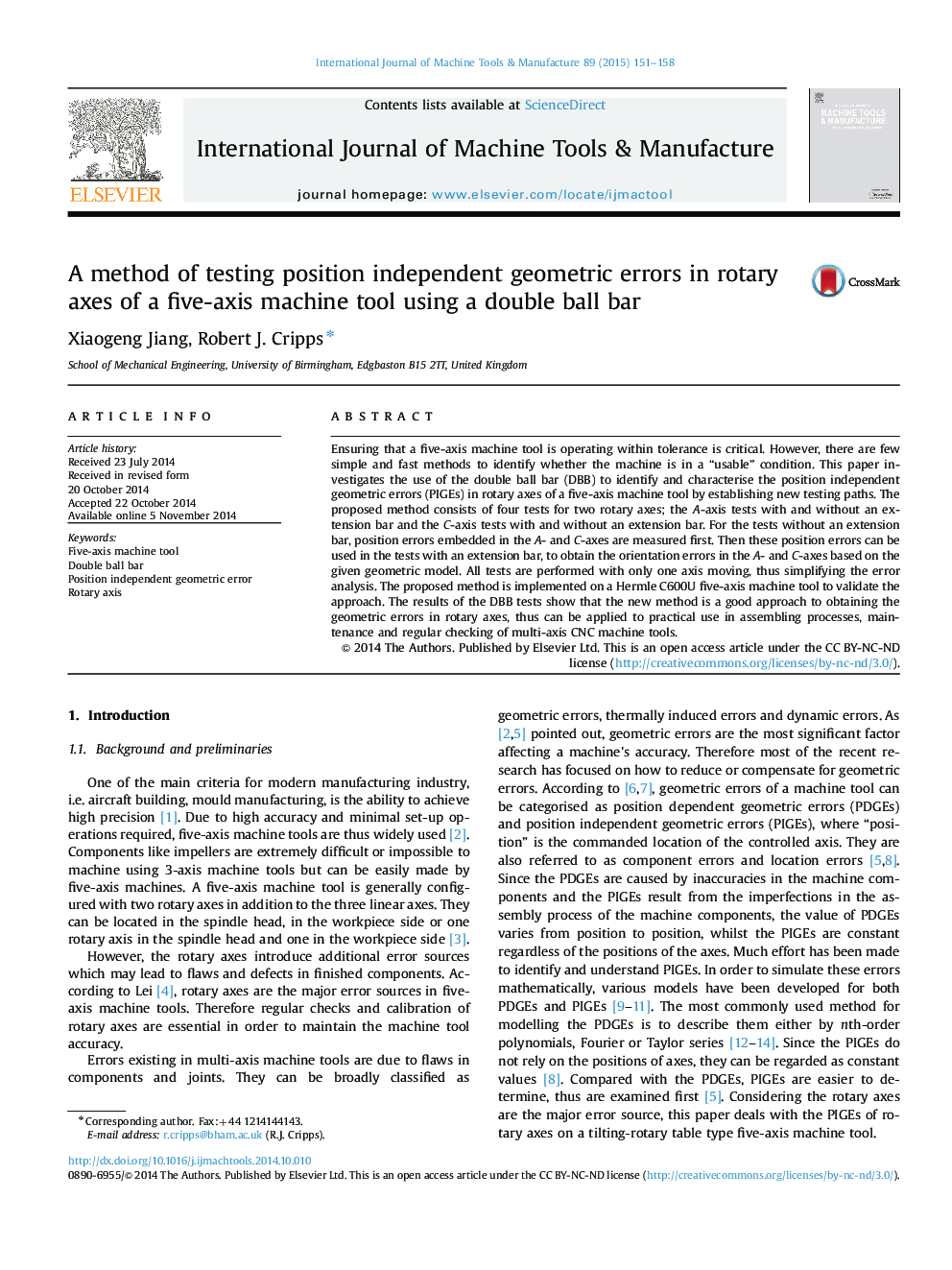| Article ID | Journal | Published Year | Pages | File Type |
|---|---|---|---|---|
| 778818 | International Journal of Machine Tools and Manufacture | 2015 | 8 Pages |
•A double ball bar to test the position independent geometric errors of rotary axes.•Setup errors identified with conventional planar tests.•Only one axis driven during each tests.•Geometric models given for deduction of errors from raw data.•Method validated on a tilting rotary table type five-axis machine tool.
Ensuring that a five-axis machine tool is operating within tolerance is critical. However, there are few simple and fast methods to identify whether the machine is in a “usable” condition. This paper investigates the use of the double ball bar (DBB) to identify and characterise the position independent geometric errors (PIGEs) in rotary axes of a five-axis machine tool by establishing new testing paths. The proposed method consists of four tests for two rotary axes; the A-axis tests with and without an extension bar and the C-axis tests with and without an extension bar. For the tests without an extension bar, position errors embedded in the A- and C-axes are measured first. Then these position errors can be used in the tests with an extension bar, to obtain the orientation errors in the A- and C-axes based on the given geometric model. All tests are performed with only one axis moving, thus simplifying the error analysis. The proposed method is implemented on a Hermle C600U five-axis machine tool to validate the approach. The results of the DBB tests show that the new method is a good approach to obtaining the geometric errors in rotary axes, thus can be applied to practical use in assembling processes, maintenance and regular checking of multi-axis CNC machine tools.
